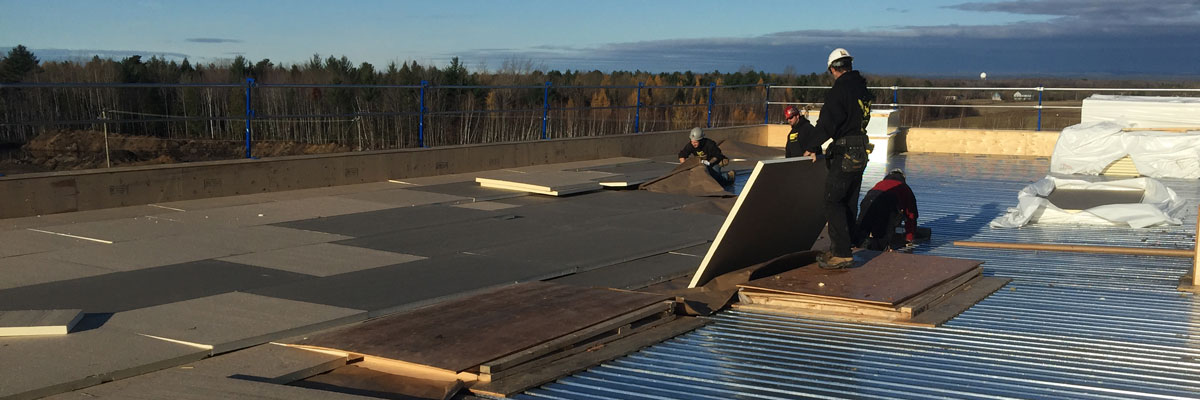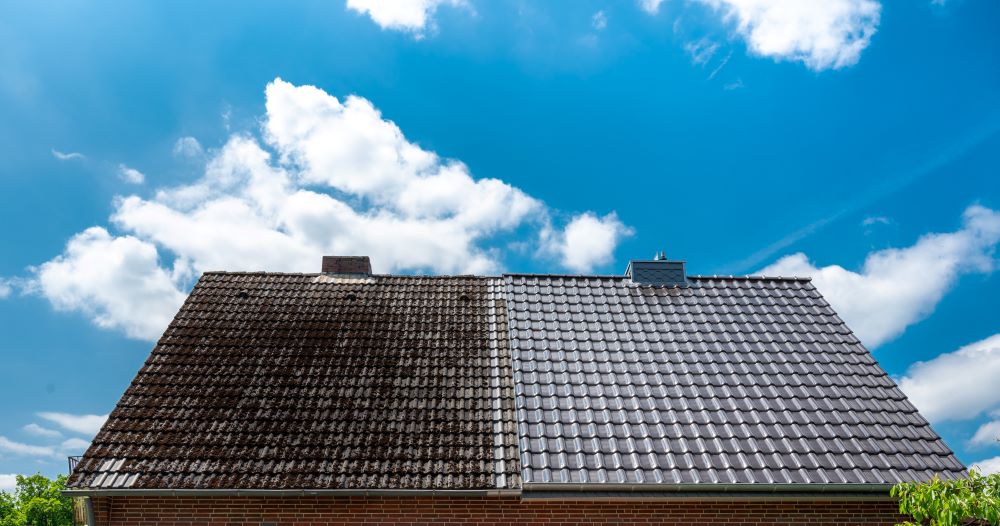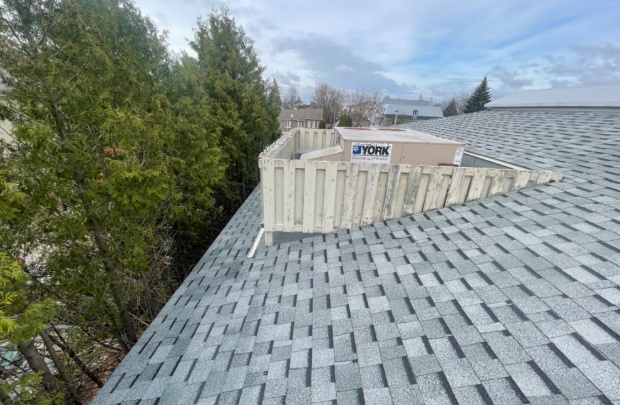When doing flat roof repair or renovation, the choice of covering is an important but often overlooked step. Your roof and its components are among the most important elements of your home and the loss of its integrity can weaken the entire structure. This is why it is important to consider the advantages and disadvantages of each type of roofing to determine which one best suits the needs of your building.
There are two choices: TPO and elastomeric membrane. To help you make your selection, Duro-Toit has drawn up an exhaustive list of their characteristics and a summary to help you choose between TPO and elastomer. As you will see, choosing the right flat roof membrane is a full-time job!
What is a TPO membrane?
Commonly used for flat roofing, the TPO membrane is a single-ply system made of thermoplastic.
Why choose a TPO membrane?
There are 4 advantages that make TPO so popular in Quebec:
- Resistance to harsh weather conditions
- Lasts for about 40 years
- No chemicals are used for its installation
- Cooling properties in summer
A membrane that withstands Quebec’s climate
First and foremost, TPO is clearly a good choice when it comes to material durability. In fact, it has a lifespan of approximately 40 years and its installation is often accompanied by a manufacturer’s warranty of up to 20 years. This durability is a direct result of the membrane’s resistance to sun, rain, wind, tearing and more.
TPO is the eco-friendly option
Surprisingly, TPO joints are hot-air welded, which means that no chemicals are used for its installation. Because there are no halogens or plasticizers in the composition of the TPO membrane, it is often considered an environmentally friendly alternative to traditional coverings.
A membrane that cools your house in summer
Finally, TPO’s white color gives it reflective attributes which, in addition to preventing heat islands, reduces the accumulation of heat inside. The property is therefore cooler in the summer, which helps reduce air conditioning costs.
Are there any reasons not to choose TPO membrane?
The only reported drawback is the lack of flexibility of TPO. This characteristic makes the membrane more fragile when the temperature is below zero. Nevertheless, regular maintenance and flat roof snow removal services in winter will ensure the durability of your roof.
What is elastomeric membrane?
Formed from two layers of bitumen, the different parts of which are fused together to ensure maximum waterproofing, elastomer is mainly found on flat commercial roofs because it is ideal for large surfaces. But nothing prevents it from being installed on residential roofs.
Why choose elastomer for a flat roof?
For decades, elastomer has proven itself and continues to grow in popularity. In addition to its appearance, strength and uniform quality, this type of membrane is valued for:
- A long life span
- Easy installation even in difficult weather conditions
- Ability to reduce heat in summer
Longevity almost equal to TPO
The elastomeric membrane has a lifespan of nearly 35 years. Although slightly more expensive than conventional coverings, it is an excellent investment since it requires minimal maintenance. Note that the manufacturer’s warranty on the product varies from 5 to 20 years.
Easy installation in winter and summer
Another advantage is its installation. The elastomeric membrane can be installed in summer and winter, which, depending on Quebec’s geographic location, is very practical in case of incidents. Refer to our animation on the steps of flat roof renovation to learn more.
A reduction of heat in summer (as with the TPO membrane)
Although not recyclable in Quebec, as with TPO, its white color allows it to reflect sunlight to reduce heat build-up on the roof. This feature makes it one of the most environmentally friendly options on the market.
How to choose between TPO and elastomeric membrane
Finally, elastomeric and TPO membranes are two products that stand out for their durability and energy efficiency. However, various other elements should be taken into account when choosing the potential covering for your building.
Among other things, it’s important to assess:
- What type of roofing system is in place?
- Where is your property located?
- What time of year will the work take place?
Summary of the characteristics of TPO and elastomeric membranes
- Durability: the lifespan of these flat roof coatings is excellent, but TPO is slightly more durable than elastomer. In both cases, they are a safe bet. When properly installed, you can sleep soundly for years to come.
- Resistance to harsh weather conditions: elastomer tends to react very well in cold weather. This is not always the case with TPO. Both membranes are heat resistant and have the ability to cool your home in summer.
- Eco-friendliness: TPO is the winner! The TPO membrane is made of environmentally friendly products, whereas elastomer is not recyclable in Quebec.
- Maintenance: these 2 membranes generally require very little maintenance. However, it is recommended that professional roofers perform a few flat roof inspections to ensure that it lasts as long as possible.
Leave the choice of your flat roof membrane to the professionals
If you are still unsure about the selection of your materials, you should trust an expert to guide you and refer you to experienced roofers to do the work. Duro-Toit roofers are experienced with flat roofs and membrane selection. Do not hesitate to contact us by phone at (514) 755-8648 or by filling out the contact form by clicking here.



